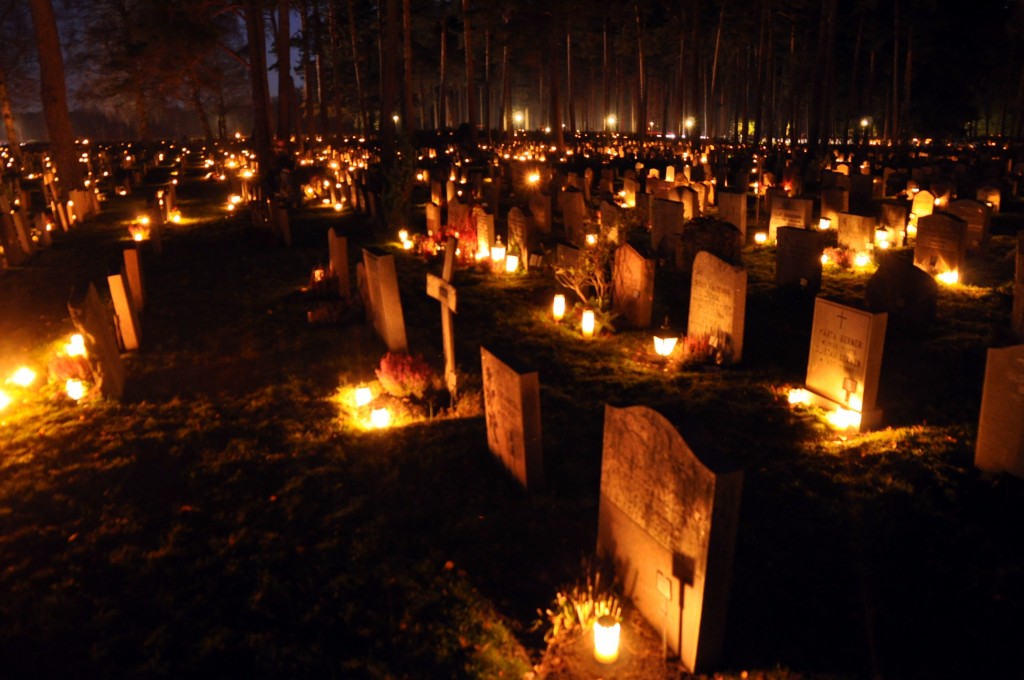November 1st to Americans might be known as an unofficial day of collective candy hangovers, but in Italy this is All Saints Day, both a national and religious official holiday. With more and more of the younger generation embracing the non-Italian tradition of Halloween, not having school or work the day after makes for a perfect excuse for Italian kids to trick-or-treat till late, or go to Halloween-themed festivities at pubs and clubs around town. But what exactly is this holiday?
What is All Saints Day? All Saints Day is a Christian holiday, sometimes also known as “Hallowmas”, “All Hallows”, or “Solemnity of All Saints”. It’s a day in honor of all known or unknown Saints. Who is considered a “Saint” might differ between the various denominations of Christianity, but in general a Saint is someone who was Christian, and has been recognized (in an official way) for having “an exceptional degree of holiness, sanctity, and virtue”. All Saints Day is then a day to celebrate all of them.
When did All Saints Day start? There are lots of scholarly ideas and theories but there is no one definite source for this holiday. It’s believed to have its origins in an Ancient Roman ritual called Lemuria. It has been recognized officially in Rome since May 13th 609 AD when Pope Boniface IV consecrated the Pantheon to the Blessed Virgin and all the martyrs. It’s observance on November 1st was later set by Pope Gregory III in the mid 8th century AD. How All Saints Day is observed today differs from country to country, but for Italy it’s typically a day of mass, eating, and relaxing.
Is All Saints Day related to Halloween? Yes, sorta….though the origins of Halloween are a point of discussion and scholarly uncertainty as well, so the exact connection is unclear since most don’t believe Halloween has Christian roots but rather Pagan roots. In any case, it does seem to correspond with All Saints Day in that Halloween is also known as “All Hallow’s Eve”, the feast night before All Saints Day. Others connect trick-or-treating to the immediately following All Saints Day and All Souls day because in the 12th century, people would bake “soul cakes” and collect them from others by going door to door, as a means of praying for the saints and the recently dead. Today’s Halloween symbols and traditions are mostly of North American influence, however, with symbols such as the pumpkin (native to North America) and costumes typically of characters and monsters from Gothic and horror literature.
Is All Saints Day the same as Mexico’s Dia de Los Muertos? Not really! Dia de Los Muertos in Mexico is closer to All Souls Day, celebrated in the 2nd of November. But even then, both traditions have different origins, and only resemble one another (and in fact it’s quite widespread in the world traditions of ancestral reverence). Dia de Los Muerto’s , with its traditional sugar skull treats and offerings of food and flowers to dead loved ones, has its roots from its indigenous pagan cultures and their own rites and rituals.
What is All Souls Day? All Souls day is primarily celebrated by the Catholic Church (and primarily Catholic countries). It falls on November 2nd, the day after All Saints Day. Roman Catholics see this as a day to pray for the souls, often recently departed, which may be stuck in purgatory and help them to get to heaven. It’s similar to other ancestral veneration customs and rites, such as the Dia de Los Muertos in Mexico or Chinese Ghost Festival.
Did Ancient Romans celebrate something like All Saints Day or All Souls Day? Yes, they had a feast called Lemuria, when they performed religious rites to rid bad spirits and ghosts from their homes. This is unsurprisingly one of the believed sources for All Saints Day!
Here’s wishing you a happy All Saints Day and a minimal candy-hangover!

